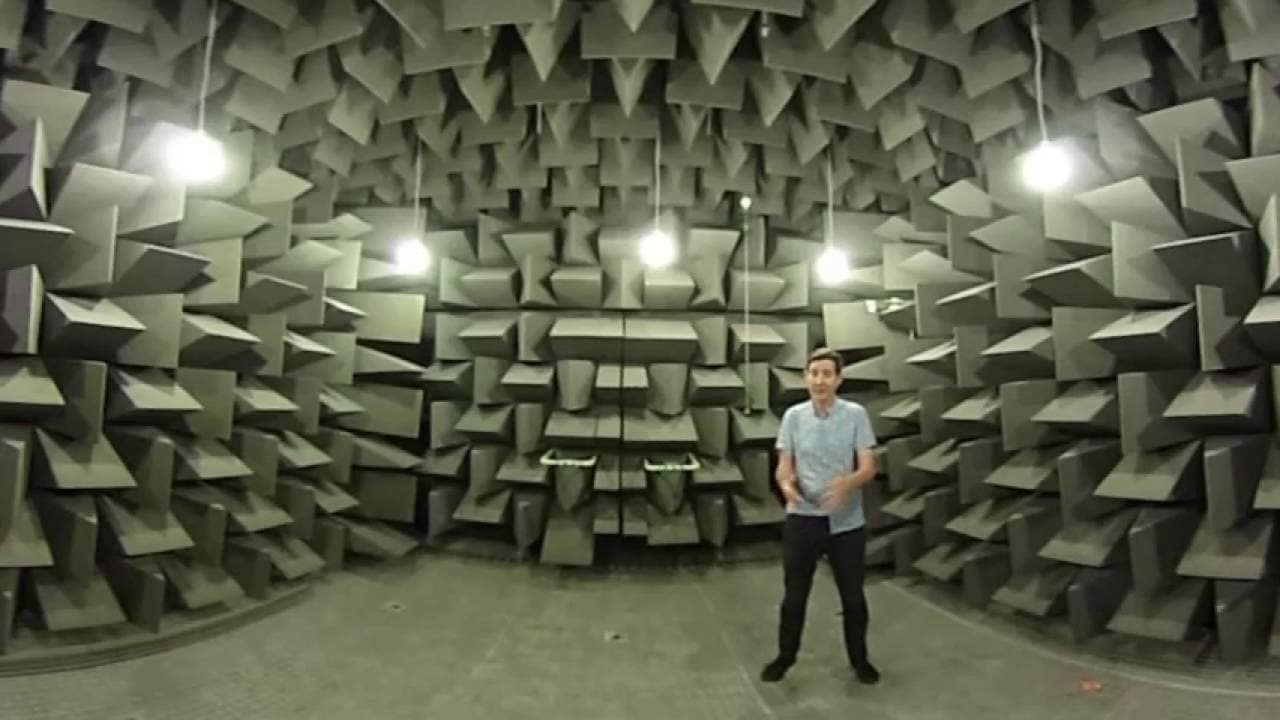One of the things that we often talk about when we’re running our CPTC (Cirrus Product Training Courses) is how our hearing works and we often end up talking about how, if there’s no ambient sound, we can feel uncomfortable and can become disoriented very quickly.
One of the best (or maybe the worst) places to experience this is in an anechoic chamber. During my time at the University of Salford, we used the anechoic chamber for testing and evaluating hearing protection, as well as subjecting each other to tests as part of our final year projects. Something that often became very uncomfortable very quickly.
The anechoic chamber at Salford has been designed to be as quiet as possible and the background noise level is a very low -12.4dB(A). This is well below what most people would ever need to measure with a sound level meter. This low level is essential if you need to accurately measure very quiet noise sources or test equipment that makes very little noise itself.
These purpose-designed rooms are isolated from outside noise so that nothing can leak in and they are often floating on special mounts to prevent any unwanted noise or vibration from getting through.
Inside the chamber itself you’ll usually find that all of the walls, ceiling and floor are covered by long triangular foam wedges, which have been designed to absorb any noise that hits them, preventing any sound from bouncing back to you. There is usually a wire mesh floor so that you can walk in and use the chamber for measurements.
The effect of this is that you really only hear the noise that you generate yourself. What this means in reality is that you can hear the blood pumping through your head, the creaking of your joints and quite often the noise of your digestive system. These noises are always present but they are masked by the background noises that we live with day in, day out. By removing the noise of normal life, we can hear the noise that our bodies make.
Professor Trevor Cox from the University of Salford explains how the anechoic chamber at Salford works in this fascinating 360 degree video. Drag your mouse around the explore the anechoic chamber.

In 2015, Microsoft’s anechoic chamber was measured as having a background noise level of -20.3dB(A), a new world record verified by Guinness World Records. What’s even more impressive about this figure is that around -23dB is the quietest level that can exist on our planet. This is the amount of noise made when air molecules bounce off one another.
There’s an interactive presentation on the Microsoft website that allows you to explore the chamber and find out more about how quiet this room really is.
Do you have a question for the Noise Doctor? Drop us a line (or just shout really loud) and we’ll see what we can find out.



